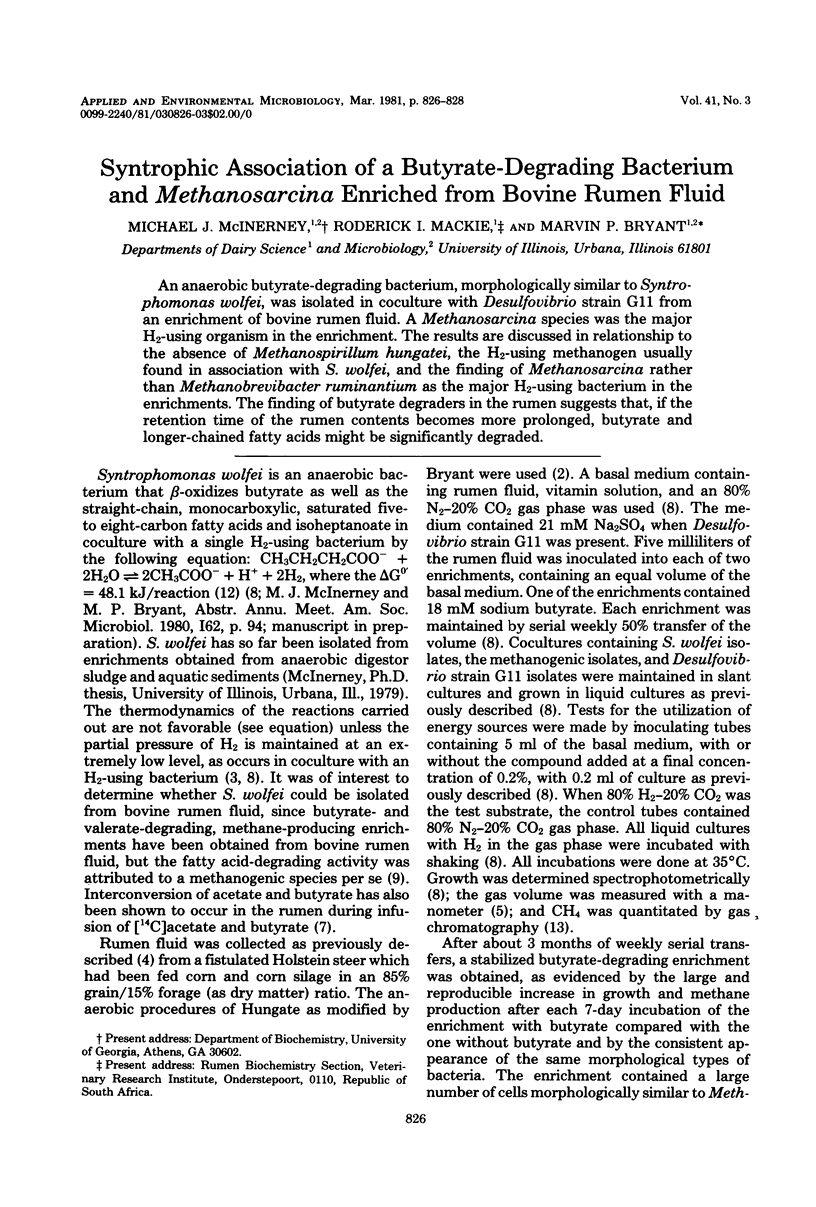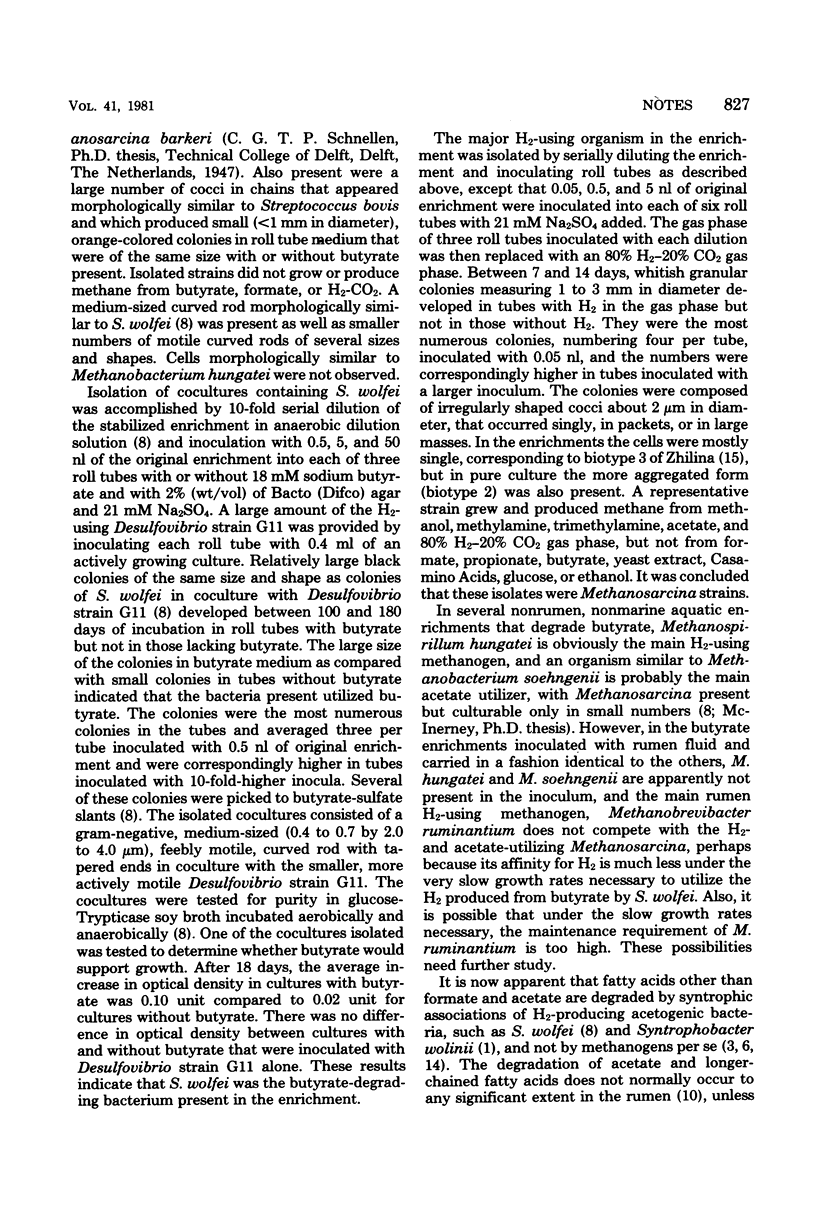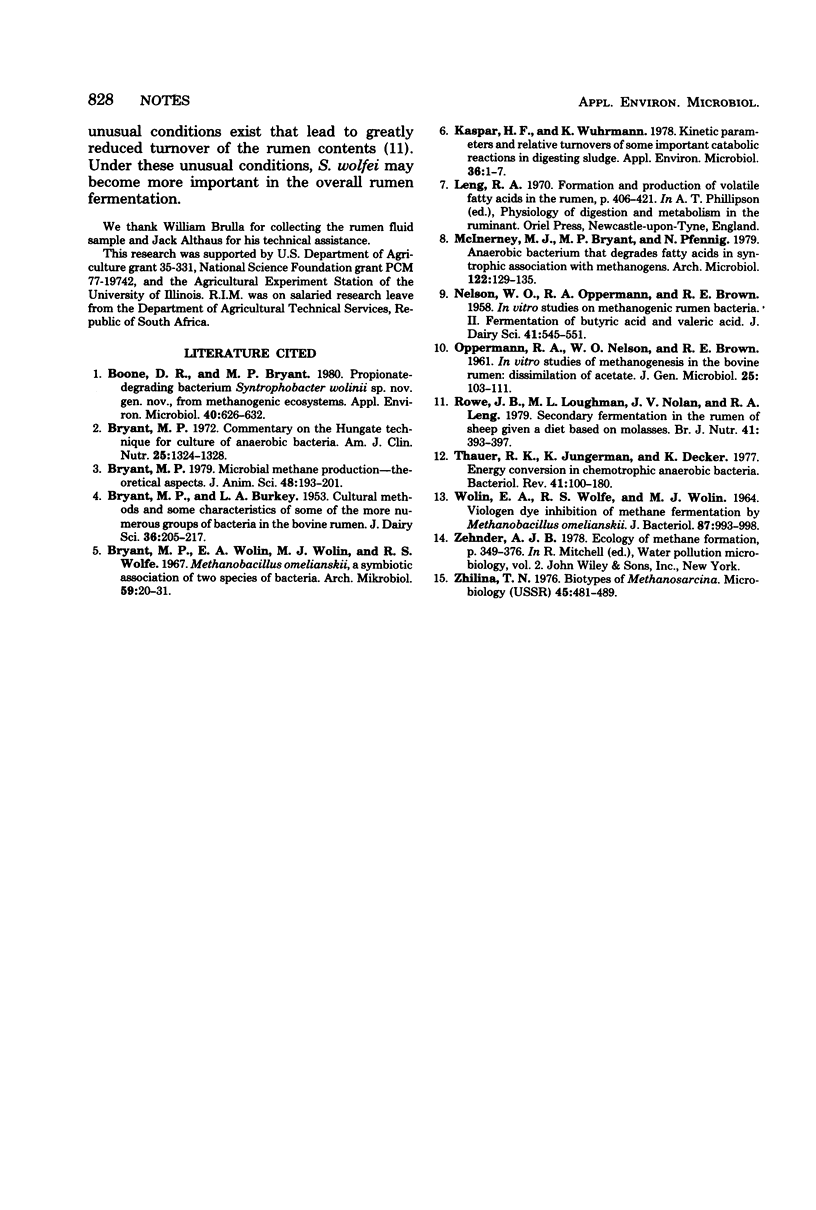Abstract
An anaerobic butyrate-degrading bacterium, morphologically similar to Syntrophomonas wolfei, was isolated in coculture with Desulfovibrio strain G11 from an enrichment of bovine rumen fluid. A Methanosarcina species was the major H2-using organism in the enrichment. The results are discussed in relationship to the absence of Methanospirillum hungatei, the H2-using methanogen usually found in association with S. wolfei, and the finding of Methanosarcina rather than Methanobrevibacter ruminantium as the major H2-using bacterium in the enrichments. The finding of butyrate degraders in the rumen suggests that, if the retention time of the rumen contents becomes more prolonged, butyrate and longer-chained fatty acids might be significantly degraded.
Full text
PDF


Selected References
These references are in PubMed. This may not be the complete list of references from this article.
- Boone D. R., Bryant M. P. Propionate-Degrading Bacterium, Syntrophobacter wolinii sp. nov. gen. nov., from Methanogenic Ecosystems. Appl Environ Microbiol. 1980 Sep;40(3):626–632. doi: 10.1128/aem.40.3.626-632.1980. [DOI] [PMC free article] [PubMed] [Google Scholar]
- Bryant M. P. Commentary on the Hungate technique for culture of anaerobic bacteria. Am J Clin Nutr. 1972 Dec;25(12):1324–1328. doi: 10.1093/ajcn/25.12.1324. [DOI] [PubMed] [Google Scholar]
- Bryant M. P., Wolin E. A., Wolin M. J., Wolfe R. S. Methanobacillus omelianskii, a symbiotic association of two species of bacteria. Arch Mikrobiol. 1967;59(1):20–31. doi: 10.1007/BF00406313. [DOI] [PubMed] [Google Scholar]
- Kaspar H. F., Wuhrmann K. Kinetic parameters and relative turnovers of some important catabolic reactions in digesting sludge. Appl Environ Microbiol. 1978 Jul;36(1):1–7. doi: 10.1128/aem.36.1.1-7.1978. [DOI] [PMC free article] [PubMed] [Google Scholar]
- OPPERMANN R. A., NELSON W. O., BROWN R. E. In vivo studies of methanogenesis in the bovine rumen: dissimilation of acetate. J Gen Microbiol. 1961 May;25:103–111. doi: 10.1099/00221287-25-1-103. [DOI] [PubMed] [Google Scholar]
- Rowe J. B., Loughnan M. L., Nolan J. V., Leng R. A. Secondary fermentation in the runen of a sheep given a diet based on molasses. Br J Nutr. 1979 Mar;41(2):393–397. doi: 10.1079/bjn19790048. [DOI] [PubMed] [Google Scholar]
- Thauer R. K., Jungermann K., Decker K. Energy conservation in chemotrophic anaerobic bacteria. Bacteriol Rev. 1977 Mar;41(1):100–180. doi: 10.1128/br.41.1.100-180.1977. [DOI] [PMC free article] [PubMed] [Google Scholar]
- Wolin E. A., Wolfe R. S., Wolin M. J. Viologen dye inhibition of methane formation by Methanobacillus omelianskii. J Bacteriol. 1964 May;87(5):993–998. doi: 10.1128/jb.87.5.993-998.1964. [DOI] [PMC free article] [PubMed] [Google Scholar]
- Zhilina T. N. Biotipy metanosartsiny. Mikrobiologiia. 1976 May-Jun;45:481–489. [PubMed] [Google Scholar]


